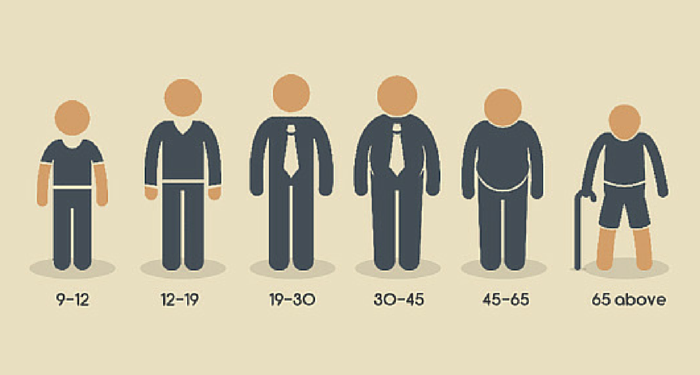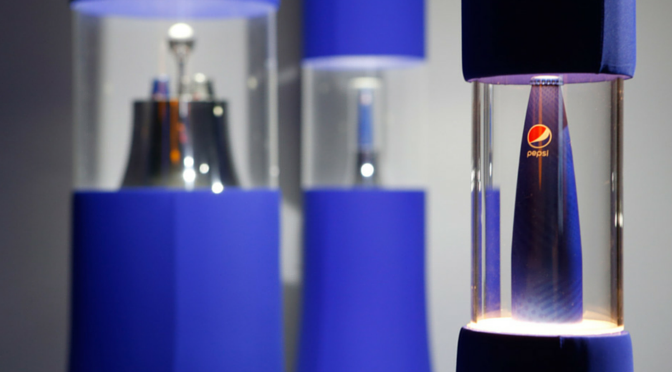3 Ways a Strong Brand Can Bring Your Organization Together
Not only can a strong company brand drive consumer and market success, but it can also have a positive impact from within the office walls. Whether it’s through initial brand development or a rebranding effort, the creation and implementation of a strong brand will have a unifying effect on the organization as a whole.
Although often overlooked, here are three ways a strong brand can serve to make your organization stronger and more successful:
- Unite behind a common goal
A strong overall brand should include the definition of what a brand stands for and their overall mission – what success means to them. For employees, the knowledge that their work and their role in the organization has a definite end goal and purpose will allow for a more unified and inspired workforce. Organizations thrive when everyone is following a similar path and know what success looks like, and this aspect of a strong brand gives the employees just that.
- Something to write home about
Never underestimate how pride can strengthen an organization. Pride in the product, pride in the people, and yes, pride in the brand. Whether it’s a logo is a visual gem, or a new brand name that encompasses perfectly what the organization represents, when an organization is made up of people who are proud of the brand and feel good about connecting themselves with that brand, the entire organization benefits. Keep this in mind when creating the entire brand, not just these elements. Employee feedback and input can be a valuable piece of the brand development process, providing insights into how potential brands would go over within the organization.
- Keeping a steady stream of friendly faces
It’s not enough to bring in outstanding talent to an organization – it’s also vital to keep those talented employees within the company for a long time. In today’s fast-paced employee world, where job changes are commonplace and longevity within one organization is becoming more rare, potential and current employees care about the organizational brand. The best of the best have a number of options available for their services, and often a choice comes down to the details – that’s right, such as a strong brand. Another benefit is the brand can be shown off and exhibited early on in the hiring process, from consistent email signatures to an office space that carries and shows off the brand.
Organizations face a multitude of attention-needing issues and problems each day, that take time and effort to work on. They are also tasked with keeping an eye on what’s coming next, to properly prepare the organization for future success. They need assistance in whatever area possible, and a strong brand can be the ticket for organizational unity and consistency, freeing up a crucial aspect of managing your company.
How to Ensure Smart Branding Evolution
If you’ve been walking almost anywhere outside the past few weeks, you’ve undoubtedly either seen or almost run into someone on a beeline trek with their head in their phone, searching for a nearby Pokémon character. The Pokémon Go craze is in full force – it’s everywhere you look in real life, and now is making its way into the business world. Brands are using the phenomenon in their marketing, advertising and product development decisions, hoping to ride the coattails to success.
But some brands are still standing on the sidelines and out of the fray. Their brands are uninfluenced by the latest sensation to grab the public’s attention. Instead, they are hoping to stand out by 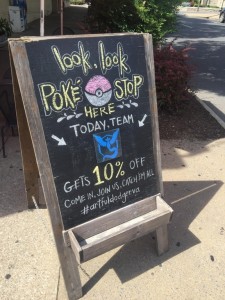 standing out – a strategy of being unique doing the very things that were commonplace a month ago.
standing out – a strategy of being unique doing the very things that were commonplace a month ago.
From a branding standpoint, there is a definite risk involved here. When brands don’t latch onto a trending topic or event, there are going to be those in the marketplace who will see this as being out of touch or having an inability to adapt. These brands will reap the benefits of those caught up in the mass hysteria, while turning their nose at the brands that aren’t playing the game.
However, one of the most sought-after brand characteristics is stability, and these brands are showing the have it. Staying true to themselves, trusting in their brand strength, staying the course in their brand persona – these are just a few of the nails they are hitting right on the head when it comes to building a strong brand.
Now, this isn’t to say that every new successful trend should be avoided at all costs by strong brands. There are some that come around that are perfect fits and should be capitalized upon. But the distinction lies in the fit – change for the sake of change and being “hip” just because everyone else is doing it is a one-way ticket to weakening your brand.
Being a strong brand isn’t synonymous with being rigid and unwilling to change; in fact, it should be flexible, providing room to shift and shape as time passes. It’s one of the hallmarks of long-lasting brands. The marketplace changes, consumers evolve, and those that survive evolve right along with them – to a point.
They know that there is a sweet spot in their brand landscape where they are best set up for success – their “home” full of ideal audience targeting, on-brand messaging and brand elements that fit ideally into their strategic direction.
For strong brands looking to evolve, defining “home” is crucial. Staying within themselves and not going outside of their brand’s comfort zone will allow for evolution without compromising the brand. By keeping this in mind, they can ensure their brand is up-to-date with the current market landscape while simultaneously allowing for it to stay strong and consistent.
So next time you see a brand advertising their connection with Pokémon Go right next to a brand who has chosen to stay out of the trend, take note of how their brand played into the decision, and whether they are staying “home” with their choices.
Image Sources:
Image 1
Image 2
Learn more about building your best brand portfolio strategy by downloading this FREE webinar, "Identifying The Opportunities In Your Brand Portfolio - Are You Capitalizing On Every Potential Business Opportunity Your Portfolio Provides?"
How to Build Your Brand Portfolio Using a Flagship Brand Strategy
"Strategically, Coke and Coke Zero Sugar are ham and egg. It's absolute dovetailing. I always use the analogy of tea: We either have it with our without sugar. It's Coke, with or without sugar,"
This quote, from Coca-Cola Great Britain marketing director Bobby Brittain in a recent announcement that starting this week in Great Britain, Coke Zero will be reformulated and rebranded as Coca-Cola Zero Sugar, highlights an interesting trend in brand portfolio strategy, where a classic, flagship brand becomes the comparison point to a number of secondary brands within the portfolio. With this strategy, the hope is that consumers will connect the two brands even more than before, boosting Coke Zero while also highlighting its differences from Coke.
When you have an iconic brand already in your portfolio, along the lines of what the Coca-Cola Company has with its namesake product, the decisions in regards to complementary brands can have a similar strategic direction.
The brand equity built up from these brands can be a beneficial foundation to stand on when building new complementary brands, especially if those share a commonality with the iconic brand, such as a similar name or logo.
Brittain highlighted the goal of this brand strategy shift and pointed out that using Coke as the standard-bearer for the entire brand portfolio has long been a point of emphasis.
"We're using Coke very much as the gold standard, the red standard. We're paying Coke the ultimate compliment because we are saying it tastes more like Coke, looks more like Coke, and we're always using Coke as the point of comparison," Brittain said.
This is especially interesting from a brand strategy standpoint because Coke Zero is not a new brand – it has the ability to stand on its own to a certain point. The Coke Zero brand has been on the market for a number of years, finding success and making an impact on the overall brand portfolio.
However, such is the strength of the Coca-Cola brand that to increase the success of other brands, their strategy is now focused on becoming more like the flagship product, and instead of branding them as their own entities, they are becoming more of an offshoot of Coke.
The company is also playing up this connection to its iconic imagery with the “one brand” strategy it recently began rolling out. With this strategy, the iconic red disk that has long signaled the Coca-Cola brand will now be featured across the entire portfolio, with the individual products now sharing a similar look but with minor tweaks to identify each one.
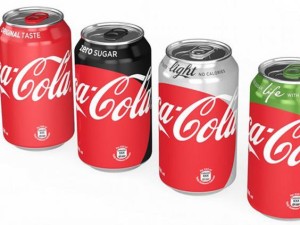 These two strategies are taking two of Coca-Cola’s most recognizable brand elements – the name and the red disk – and using them as “boosters” for its complementary branding. For many brand portfolios, this strategy is a far-off dream, only available if and when their main brand achieves a level of notoriety and positive brand connotation where it can be enabled to carry over into the space of additional brands.
These two strategies are taking two of Coca-Cola’s most recognizable brand elements – the name and the red disk – and using them as “boosters” for its complementary branding. For many brand portfolios, this strategy is a far-off dream, only available if and when their main brand achieves a level of notoriety and positive brand connotation where it can be enabled to carry over into the space of additional brands.
So how can those without a global icon at the helm of the brand ship take advantage of whatever boost may come from its main brand? The answer may not be all that different from Coca-Cola’s strategy.
As mentioned before, the company is using Coke as the starting point for its complementary brand descriptions. While this obviously has a positive effect on the secondary brands, it also raises the profile and positivity of Coke itself. If a consumer, who may be on the fence about a product, sees that a company is using a direct comparison between brands to highlight quality, then it is safe to assume that the primary brand represents excellence.
So if your primary brand isn’t quite at Coca-Cola levels, this comparison to other brands, especially of those find great success, can raise its standing in the consumer mindset as well. The benefits really do go both ways.
Image Sources:
Image 1
Image 2
Learn more about building your best brand portfolio strategy by downloading this FREE webinar, "Identifying The Opportunities In Your Brand Portfolio - Are You Capitalizing On Every Potential Business Opportunity Your Portfolio Provides?"
How to Make Your Brand Stand Out in a Crowd
On a hot Monday afternoon, July 4th, 2016, competitors will gather at the boardwalk on Coney Island in Brooklyn, N.Y. to compete in one of the most famous Indepedence Day traditions around – the Nathan’s Hot Dog Eating Contest. Now, despite what some may think of the contest itself, there is little doubt the impact it has had on the Nathan’s Famous Hot Dog brand.
This was a brand that was previously only known to a select few in the northeast, but is now known around the world. And much of the thanks for that comes from those who showed up every  Fourth of July in front of the brand’s Coney Island location to see how many hot dogs they could eat in ten minutes.
Fourth of July in front of the brand’s Coney Island location to see how many hot dogs they could eat in ten minutes.
That’s right – a brand was able to build an entire branding strategy off of a competitive eating contest.
How did they do it? This situation is a classic example of a brand seeing an unmet need and filling the space.
There normally isn’t a lot going on in terms of televised entertainment on this day of the year, and the company had been holding hot dog eating competitions for many years. With the foresight to see the potential behind filling the entertainment void, Nathan’s then was able to connect their brand with the holiday in general. As the competition’s popularity grew, so did the brand recognition and brand equity.
For brands looking to stand out in a crowded marketplace, looking for ways to reach outside of just your product can be the most effective way to differentiate from your competitors. Nathan’s was sitting in the packed hot dog-selling industry, with little brand separation, especially when competing against the bigger brands in its space.
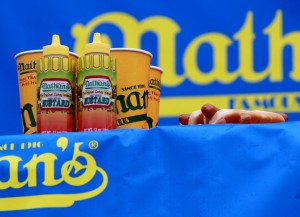 They didn’t look to try and create a fancy new logo or change their brand values – instead, they used the local strength of their brand and a timely piece of entertainment connected with their product to gradually build up.
They didn’t look to try and create a fancy new logo or change their brand values – instead, they used the local strength of their brand and a timely piece of entertainment connected with their product to gradually build up.
An important point to keep in mind, however, is that a quality product behind the brand is a vital piece of the puzzle. There is little doubt that if Nathan’s sold an inferior hot dog that didn’t stand up to the reputation of the brand, then its growth and reputation would be limited.
Let’s assume you are offering a high-quality product in a crowded space where your brand is struggling to stand out. You may not have something unique as the hot dog eating contest to help grow your brand, but your brand is so much more than its tangible assets.
Maybe your customer satisfaction is astoundingly good? Maybe you have a strong connection to a season, place or feeling? Or possibly your brand is synonymous with a particular event, much like the Nathan’s example.
All of these are ways to spread your brand beyond the traditional brand limits, and find new audiences who simply needed to be made aware of your brand and what it stands for.
Image Sources:
Image 1
Image 2
Learn more about building your best brand by downloading this FREE webinar, "Identifying The Opportunities In Your Brand Portfolio - Are You Capitalizing On Every Potential Business Opportunity Your Portfolio Provides?"
The Appearance of Assortment: Why Kraft-Heinz Cross-Branded
“People achieve more as a result of working with others than against them.” -Dr. Allan Fromme
Facing a highly competitive packaged food industry and a shift in demands and drop in growth, Kraft-Heinz decided to take an offbeat-path to win consumers back. In a series of collaborative efforts with other brands, Kraft-Heinz has been able to achieve the appearance of more premium and diverse products. As the food community changes, Kraft-Heinz is changing with it.
The recent surge in the demand for products appearing natural, protein rich, or sugar free has no doubt affected the processed and packaged food aisles of your grocery store. The mounting distrust of big food companies led to a stagnant 2015 for Kraft-Heinz. But, in 2016, a new Mac ‘n Cheese product and healthy lunchable-style sandwich pack gave Kraft-Heinz’s brand the pick-me-up it needed.
Kraft Mac ‘n Cheese was a product losing momentum and credibility as consumers started looking suspiciously at the product once viewed as a “convenient dinner option.” After collaborating with Cracker Barrel, Kraft-Heinz released a new line of Mac ’n Cheese made with premium “Cracker Barrel award winning cheese”.
The tag line title made to say “you may not have liked our old cheese, but check out this shiny new cheese, it has won cheese awards!” By isolating an element of their product, and substituting it with the same element from another reputable brand, Kraft Mac ‘n Cheese looks a little less scary in the eyes of the consumer.
But not all cross branding efforts necessarily have to be the collaboration of a “better” or more premium version of a product to make it seem improved. Kraft-Heinz’s release of the “P3”packs, a protein packed twist on the traditional Lunchables feature packaging, which boldly advertises both the Oscar Meyer and Planters brands, is an example of a new branded product that is an equal collaboration. Although neither brand is any more or less reputable than the Kraft brand, the diversity created by using the equity of two brands gives the appearance of a superior product.
Variegating its products with similar or better brands makes Kraft-Heinz look more appealing in the less popular packaged food aisle, even if they’re collaborating with other packaged food. Two seems to be consistently better than one in the eyes of an untrusting consumer. Kraft Heinz’s 0.2 percent increase in U.S. sales to $4.7 billion from the first-quarter since the release of the “P3” packs to back up this phenomenon, after 2 years of declining sales. Tying in another brand freed Kraft-Heinz from a potentially dangerous product rut.
But why is that? Do buyers feel as if brands put more effort into products born from a multi-branded collaboration? Do we view a combination of brands who lack efficacy working together makes them more accountable?
Whether the new products are truly leaps and bounds improved is still up for discussion, but this was no doubt beneficial to the Kraft-Heinz brand. In a recent Trib Article author Alex Nixon adds that Kraft- Heinz’s new products” have been anything but revolutionary, but small changes can make a big difference with consumer”. If anything, it shows an implementation of strategy in creation of new product, and a targeted response to the consumer demands. Kraft-Heinz’s cross branding strategies show they’re listening, and they still care about being in the game
Next time your eyes linger on a cross branded product, allow yourself to wonder what is getting better by the collaboration of others. Let me know what you find.
Image Sources:
Image 1
Image 2
Learn more about building your best brand by downloading this FREE webinar, "Identifying The Opportunities In Your Brand Portfolio - Are You Capitalizing On Every Potential Business Opportunity Your Portfolio Provides?"
Speaking Their Language: 4 Tips in Branding for an Age Group
If a company’s message falls down in the forest with no one to hear it, did it really even make a sound?
Just like the lonely tree tipping, a brand irrelevant to its audience’s age group is non-existent. Creating a desirable brand means creating an observable one, and sometimes that means translating your message to match the desires of those you want to buy in.
The major rifts in the mindsets between age groups make this translation a necessity. A 10-year-old and a 40-year-old might both want Sharpies, but the 10-year-old will draw dragons in art class, and the 40-year old will label his Tupperware. To prevent your business’ generation gap from showing, here are four tips to guide branding for your target age group.
- Find the listeners, and those you wish were.
Know the ages of those following your company’s story and responding to your brand messaging. The scope of people you’re actually reaching shows how much work you’re going to have to do. Use customer analytics to see what ages have their eye on your business, and then decide if you want to focus in on a group of them. Know the reason a target group might want what you’re selling, and why they’re different from who’s currently buying. Once you find out what matters to them, you can show why your brand matters too. - Use what you’ve got going for you.
Hey, it’s worked so far right? You don’t have to reinvent the wheel on your brand in order to reach a specific age group; you just have to repackage it. Take what you have and put a new spin on why it's necessary to your demographic. Use the benefits you already know your brand has to offer and create specific connections in the reasons those benefits resonate with your target market. Estee Lauder was long known as a cosmetic brand for women 40-60 years old before they made Kardashian family member Kendall Jenner an official spokes-model. The brand instantly became teen friendly, without changing or adding a single product. You won’t hear this often in the business world, but find the “Kardashian” your brand needs. - Make less, more.
Make reaching the smaller sample group better than reaching the masses by presenting your brand more efficiently. Get specific, and tailor your message in a way that couldn’t be done for a catch–all group to make possible losses worth it. The criteria that motivates customers to buy ranges far and wide between ages. Once your ages get specific, the analysis of the criteria that matters to the desired age group will be more relevant and your tactics will be more successful. Sometimes effective brand strategy means making some cuts in the people groups you care about reaching. What good is a big audience if your message is not relevant or made specifically for anyone in it? - Don’t forget the other stuff.
Have you ever heard the phrase “age is just a number?” No brand can rely on one key component of a consumer’s identity to define all of their behavior. Tune in and target age groups you want to reach but leverage your strategies with the importance of other key demographics. Gender, race, socio-economic status, lifestyle and location can all make or break whether your message will be received.
Don’t let the appeal of your brand suffer due to information ill-communicated between ages. Once your brand finds its own crafted voice that speaks right into its targets ear, it will flourish stronger than yelling at the whole world. Make your sound count, just in case your company’s message ever falls down in a forest.
Learn more about building your best brand by downloading this FREE webinar, "Identifying The Opportunities In Your Brand Portfolio - Are You Capitalizing On Every Potential Business Opportunity Your Portfolio Provides?"
Evolution, with a Purpose: How the Top Brands Stay Relevant in an Ever-Changing Market
In a recent piece for The Huffington Post Australia, author Luke Cooper asked the question, “Why would a soft drink company require a chief design officer?” The answer lies in how brands present themselves to their consumers.
As the wishes of consumers shift, brands must also shift how their strategies are developed and how they represent themselves. This trend goes beyond brand strategy; in fact, it leans heavily on visual branding to communicate the brand story.
“Design isn't about the shape of a product, but the way of thinking of the company," Mauro Porcini, Pepsi’s new Chief Design Officer, points out.
Porcini’s appointment to his role at Pepsi is the latest move by a global brand acknowledging that their brand’s success is no longer a byproduct of tangible brand elements like logo, product  quality and packaging. Rather, brands are moving into the business of emotion and connection with their consumers, utilizing branding to insert themselves in new aspects of their lives.
quality and packaging. Rather, brands are moving into the business of emotion and connection with their consumers, utilizing branding to insert themselves in new aspects of their lives.
The new wave of product design is heavily influenced by technology and the consumer’s want for brands to make their lives easier and more interesting. Pepsi’s new bottle designs, which took four years to complete, merges the iconic Pepsi branding with space-age bottle shapes and materials, all intended to create the emotional connection that Pepsi is a brand of the future.
It’s quite a risk for these long-lasting brands, which have spent decades building up their brand equity through familiarity and consistency, to essentially rebrand their visual branding elements in the name of the next big thing. But they see, and have seen for a while, that today’s consumer base is skewing younger and showing strong signs of favoring brands with more flash and modern looks.
With this change in brand strategy comes a word that has been the driving force behind many of the rebrands, brand refreshes, updates and strategy shifts throughout the years – relevance. Brands are consistently fighting to stay relevant with their target audience, and the recent tech-influenced design choices are perfect examples.
There is a fine line, however, when looking to stay relevant. Yes, there are some brands who can easily and seamlessly evolve and change their branding, keeping their brand equity in tact while staying top-of-mind with consumers. However, this is a rarity in the branding world, and a characteristic that does not come easy.
For the rest of the brands, a pair of strategies are available as possible solutions.
The first starts at the beginning of the branding process with a strategy that at first seems counter-intuitive – in order to avoid the need to constantly shift to keep up with the latest trends, develop a brand that ignores the need to feel “trendy.” In other words, if you start out with a brand strategy that is rooted in strong and well-established branding principles, then when the current trend goes out of fashion, your brand won’t go with it.
The second strategy takes a page from the book of those timeless brands who seem to stay relevant no matter what the trends. Their secret weapon is an unwavering commitment to what has made their brand strong. Whether it’s a logo, a name, a color or even just a consistently quality product, they have identified the constant among the change and used that as the calling card for their brand evolutions.
With the shift in brand presentations that have led to the hiring of a chief designer at a soda company, brands are looking more toward creating an image outside of their product – one that will stay with their consumer long after the interaction has ended, or one that will draw them in to begin with. But as has been seen throughout the history of failed rebrands, change for change sake is a recipe for disaster – brand strategy and strong visual brand guidance are crucial for keeping up with the latest and greatest.
Learn more about building your best brand by downloading this FREE webinar, "Identifying The Opportunities In Your Brand Portfolio - Are You Capitalizing On Every Potential Business Opportunity Your Portfolio Provides?"
3 Things to Consider when Taking Your Brand Name Global
Most organizations are looking for their brand to grow throughout its lifetime, and for some, that anticipated (and hoped for) growth includes expanding outside of their home region or country. However, this growth can come with a downside for the brand if certain aspects, specifically the brand name, aren’t suited to travel. Everything is going well – the brand is growing, new markets are identified, the stage is set for an initial foray into the global market – until the brand name falls flat once it leaves the home market.
So how does a brand ensure its success both locally and globally? Here are three areas of consideration to take into account when creating a brand name that will be used on a global scale:
- Legal: Make sure your brand is legally able to extend outside of your current market and that you won’t run into legal opposition using your brand name in another region or country. For instance, a local business could use parts of the brand name of a larger company, which wouldn’t cause too many problems until they tried to go national or global. Then they would almost certainly face opposition from the larger organization, which would result in time and costs spent in working out any issues that arise. Additionally, there could be parts of a brand name that pose no legal issues in the originating country, but when expanding to other nations face differing laws.
- Linguistics: Be conscious of how the brand name translates in other languages. More times that most would think, one or more words in a brand name translate very poorly into the language of a potential new market – everything from profanities to translations that don’t bode well for the business or product involved.Don’t wait until you see the negative reaction or end up on a “worst name mistakes” list to properly do the research necessary to avoid this problem. Also, keep in mind that knowing exactly where a brand might grow is rare – in this case, it’s definitely better to be safe than sorry and research the linguistic aspect of a potential brand name in as many languages as possible.
- Growth/Expandability: Once you expand, consider the impact on the business. Ideally the business will grow and you need to make sure the brand name isn’t so limiting that it impedes this progress.
Just like any aspect of a brand, a name carries valuable weight with an audience. Often, it is the first interaction they have with the overall brand, so as the brand grows, so does the potential audience. This also increases the importance of a high-quality brand name – one that will have the same impact whether it is known to 100 people or 100 million.
Creating a global-friendly brand name shouldn’t come as an afterthought or be consigned to a reactive strategy. When developing a brand name, work under the assumption that there exists a real possibility that it will be utilized on a global scale. That way, you can avoid hoping your established brand will have success when it expands beyond its current borders and find a new, global audience.
Learn more about building your best brand by downloading this FREE webinar, "Identifying The Opportunities In Your Brand Portfolio - Are You Capitalizing On Every Potential Business Opportunity Your Portfolio Provides?"
Living the Brand: How to Build a Strong Brand Persona
Why do we gravitate towards certain brands while actively avoiding others? What is causing the rise in “lifestyle” branding? When does a brand become something more than just a brand?
The answers to these questions could be the basis for an entire blog series, but for this one, we are going to focus on the common theme that runs throughout all of the answers: creating a brand that connects with your audience.
This strategy fits mainly with corporate and organizational branding, with less of an impact toward individual product branding. While those brands can and should still work toward emotional connectivity, the organization and corporate brand presents a more overarching opportunity to become more than just a brand to its audience.
When creating these types of brands, take stock of which characteristics rise to the top with the least amount of effort. A brand persona should come naturally, as it represents a brand’s very core of characteristics, ones that will easily be identified as being constructed and unnatural to the overall branding strategy. For smaller organizations especially, creating a brand that mirrors your personality and can become an extension of yourself can help drive it forward much more effortlessly.
It is in our nature to connect and prioritize those things we relate to, and those things we enjoy. Brands are the same way. It’s why emotional connectivity is so important for brands – their consumers will instinctively be drawn to their brand if there exists an emotional or personal connection.
From a brand perspective, it’s difficult to take steps toward connecting with the audience and presenting a brand that holds certain characteristics if it doesn’t resonate with who you are. To touch on the lifestyle brand topic, the most successful examples are those with founders/owners/executives to live the brand – for instance, if the brand persona is one of laid back, relaxed, eternal vacation living but their founder comes across as buttoned-up, consistently high-strung and stressed out, then the brand will lose emotional authenticity with its audience.
Additionally, your employees are the most prominent proponents of the brand – each day, to effectively advance the brand, they must live the persona and buy into what the brand represents. Again, an inauthentic brand character will have a negative impact that could be difficult to overcome.
So if you’re looking to create a brand that has strong emotional connectivity ability and ties in with your personality, find out what makes you, you. Likes, dislikes, lifestyle, goals, aspirations – all of these are important pieces to help determine your brand. Successfully accomplish this area of brand development, and living the brand will be as easy as living your life.
Learn more about building your best brand by downloading this FREE webinar, "Identifying The Opportunities In Your Brand Portfolio - Are You Capitalizing On Every Potential Business Opportunity Your Portfolio Provides?"
AW in Review - Addison Whitney Brand Salsa Recap 5.13.16
Welcome to our initial May edition of the AW in Review, our roundup of our latest brand salsa and Addison Whitney news and posts!
Don’t forget, you can stay up-to-date with everything from Addison Whitney by joining the conversation with us on our social media channels – Twitter, Facebook, LinkedIn and Google+.
Stick With What You Know: How To Achieve A Successful Brand Extension
When looking to expand a brand’s influence by introducing new products in different product categories, brand extensions can be a risky move.
It’s been said before on this very blog that when it comes to brand decisions, there’s no need to recreate the wheel. Sometimes, the brand extension that makes the most sense, or the one that comes to mind first, is there for a reason – it’s the best choice. Read More...
5 Ways To Begin Your Branding Before You Begin Your Branding
Sometimes, the work done prior to the project is just as important as the work done during. This same idea is in play during the branding process.
Jumping right into a new brand development or a rebrand is akin to jumping in a pool before finding out how deep it is. Those brands who begin their branding journey by following these five steps ensure they’re starting off on the right foot. Read More...
Looking Toward The Branding Future With An Eye On The Past
It’s a common misconception that a “rebrand” automatically means a brand new start – that when a rebrand occurs, the slate must be wiped clean and all subsequent branding elements must possess totally original characteristics.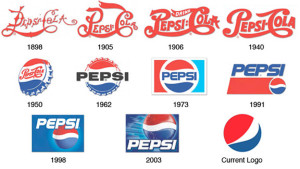
In fact, the best rebrands take the opposite approach. They take the time beforehand to identify and research what brand aspects of the previous iteration carry the most weight and provide the most benefit, then find ways to incorporate or pay homage to these aspects in the new brand. Read More...




